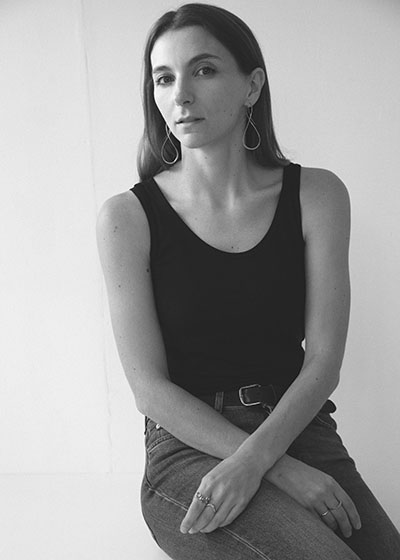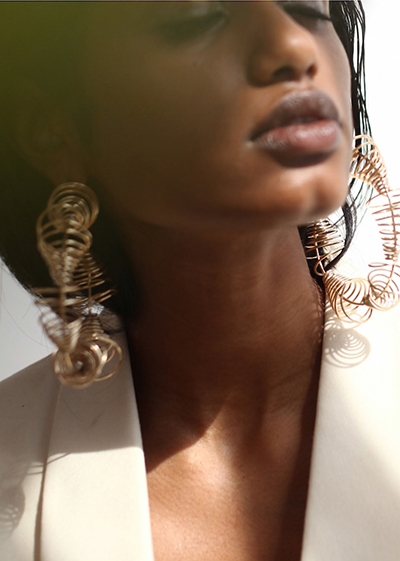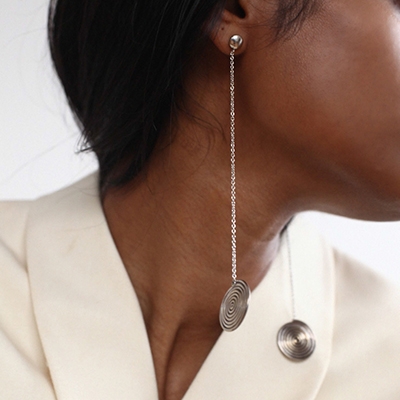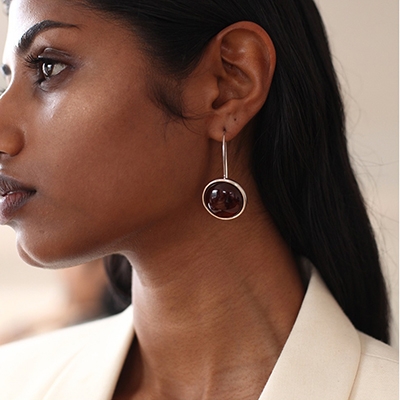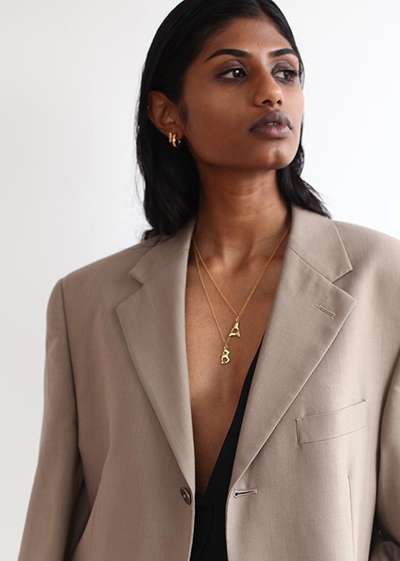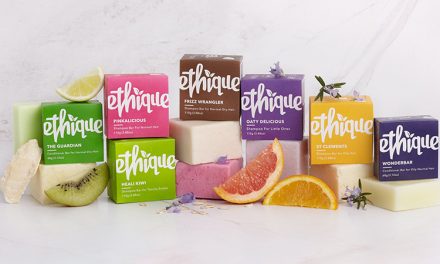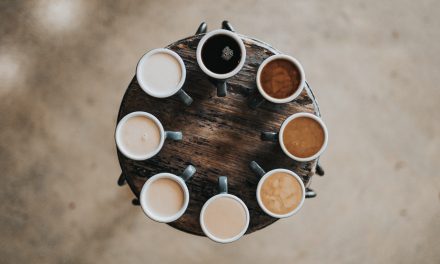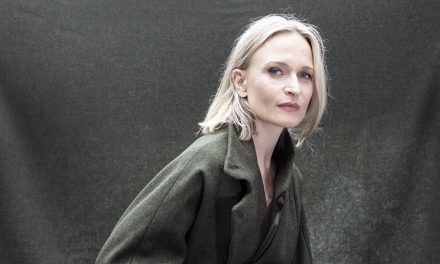10 Questions for Bar Jewellery
All Images: BAR Jewellery
What we wear can often be thought of as art, and BAR Jewellery does an amazing job of blurring the line between sculpture and jewellery. We asked Sophie McKay 10 questions about her new collection for Bar Jewellery.
Sophie McKay’s background as a fashion designer for luxury brands in London and Milan was the catalyst for her switch to jewellery. But not just any jewellery. Sophie had specific ideas about an exquisite, but slow collection of pieces that won’t break the bank, that you’ll want to wear for years to come. BAR Jewellery is inspired by art and nature, utilising fluid and sculptural shapes. From the very first steps, each piece is considered in both design and material. Pieces like the Arp Earrings are made from recycled silver and a coloured resin created from waste from paper and pulp production. Any leftover resin is then collected for reuse. It’s this attention to detail in sourcing materials, but also in manufacturing that marks BAR out from other jewellery brands.
For SS21, BAR have released 8 new pieces to add to their continuous collection. Conceived during the 2020 lockdown the collection is inspired in part by Sophie’s office view of the Queen Elizabeth Olympic Park and the ArcelorMittal Orbit sculpture. As well as thinking of ways to design the famous spirals into her pieces, Sophie acted with intention to ensure that she could still produce the collection and keep her team employed. 75% of the collection is produced in the UK using locally found recycled materials. In addition to the new pieces, the popular ‘Alphabet’ necklaces are back. The molds for the necklaces were created using dripping molten wax, which gives each letter a unique hand written quality. They are then cast using solid recycled silver by artisans in London. Just a few ways that BAR Jewellery demonstrates that sustainability and desirability can live in harmony.
The Vendeur: How has your background creating luxury fashion informed your work with BAR?
Sophie McKay: Between my time at brands like Burberry and Tom Ford, I learnt the ability to design well-balanced collections that marry the real-life needs of our customer with the right amount of interesting design elements. It also taught me that luxury is often in the detail. It’s the small elements of a design that can make a real difference, and this is something I really consider with each BAR collection. More generally, my experience has given me a broader understanding of how to run a brand. I’ve always had big ambitions for BAR, and with my knowledge of how large international businesses run, I feel I have a clearer idea on how to scale my brand.
TV: You create ‘Iconic classics,’ do you find it tough to design in a timeless non trend led way or does it come naturally to you?
SM: Having worked at brands that lead the way in setting trends rather than following them, I have never been following specific trends. I design what I feel is going to resonate with people at that time. My initial process is to design quite quickly and impulsively, feeling for a shape that is inspiring to me. Since our aesthetic is so minimal, it always lends itself to timelessness. Once I have created a prototype with a shape I like, I have another person wear it to see how they feel in it, or I wear it myself. We want our designs to be interesting to look at, but not at the cost of practicality, so this ‘testing’ phase is important.
TV: You cite artists like Jean Arp and Henry Moore as influences for the collections you create. Is your appreciation of art your starting point or do you begin with the origins of the materials and artisan techniques that fit your sustainable values?
SM: Sustainability was a starting point for the brand as a whole, so when it comes to materials, this is something that we’re constantly circling back to and working to improve. It’s a never-ending process and something we’re thinking about every day, not just as part of the design process, but in every layer of the business. Sustainability feeds into everything that we do. Artists and sculptors take centre stage on our mood boards when it comes to our inspiration. They inform the forms and shapes that the final pieces take. Modernist masters like Arp and Moore inspire the fluidity in our designs and the unapologetically minimal aesthetic.
TV: The popularity of demi fine jewellery is growing with lots of brands entering the market, why is it important to you to keep BAR accessibly priced when trying to make it as ethical and eco friendly as possible?
SM: I wanted to create a brand that would compete in the market from both a design and price perspective. Whilst the sustainability element is incredibly important to us, I realise it isn’t the most important element to all shoppers. However I made a point of creating a collection that was accessible and desirable for all. Even those who aren’t necessarily interested in eco jewellery.
TV: How does sustainability inform how you create and manufacture?
SM: Sustainability influences everything we do, from the day-to-day office habits (using only recycled paper, recycling bins etc) to the way in which we manufacture our jewellery, using recycled metals. My approach and the approach of anyone who works for me is to ensure that any decisions we make are positive and are the best that we can possibly do. Ethical practise is another important aspect of the brand. We feel this is also a really important element of being a ‘sustainable’ business. We ensure that the people who make the pieces for us are paid a fair wage. This is also extended to our own studio where we have a friendly, relaxed work environment (something that is quite hard to come by in the fast paced fashion industry). We build strong relationships based on respect with our suppliers.
TV: You use exciting materials like resin made from waste (image right). Does your low waste, eco friendly ethos make it harder to find materials that you can use?
SM: Yes, extremely difficult and it’s an on-going mission! We don’t feel we can ever be done researching and improving how we incorporate waste materials into our collections. One of the main challenges is finding waste materials that are aesthetically pleasing. However as ‘eco’ becomes more of a buzz word it has become easier to source new materials. This also extends to things like packaging where sustainable options are becoming more affordable and accessible. We try to work with suppliers who are passionate about sustainability and as interested in material innovations as we are. To get better at providing more sustainable innovations, we truly believe it requires a collaborative approach across the industry.
TV: How were you able to continue to produce during COVID and lockdowns?
SM: Although it was extremely difficult at times, we carried on through the lockdowns as best as we could. Living locally to the studio helped and allowed us to fulfil online orders and keep going. We were lucky that our manufacturers continued to work on a reduced scale. Where we needed to, we produced the jewellery in our own studio. We also made the decision to work with local artisans, many of whom were out of work at the time. This has been a really positive move for us as it means that we have closer contact with the makers and can support local Trade.
TV: What is the lost wax casting method and how does it fit into your sustainably made ethos?
SM: The lost wax casting method is an ancient method of metal casting, dating as far back as c. 3700 BCE. This method is fairly widely used and can be applied to 3D printed wax models today. In the past wax models would always be made by hand. We stay true to the traditional roots of this technique by creating pieces by hand, this gives them a more natural, free-flowing and tactile feel. We used the technique to create the casts for our Alphabet Necklace (left), which is one of our best sellers.
TV: Some of your pieces are made by artisans in Bali, does any Balinese craft or culture influence these pieces?
SM: Not necessarily, but we started to work with this factory because of their beautiful handwork, and their willingness to craft using recycled metals. However, the level of skill of the artisans mean that we can achieve the most beautiful shapes and finish.
TV: Do you have plans to expand the collections to include more materials or shapes in the future?
SM: We are constantly evolving and looking at new techniques. To add to our continuous collection, we produce small seasonal collections. This gives us the opportunity to expand the range and introduce new shapes and ideas while keeping our impact small.
Did This Put A Smile On Your Face? Why Not Subscribe?
If you enjoyed this then theres plenty more on our email newsletters that you'll love. Whether you're a sustainable newbie or an eco conscious pro, our bi monthly emails will inspire you to live sustainably and ethically.
Disclaimer: The people and models in the images featured are not associated with The Vendeur and do not endorse it or the products shown. This post may contain affiliate links. Prices correct at time of publishing.

